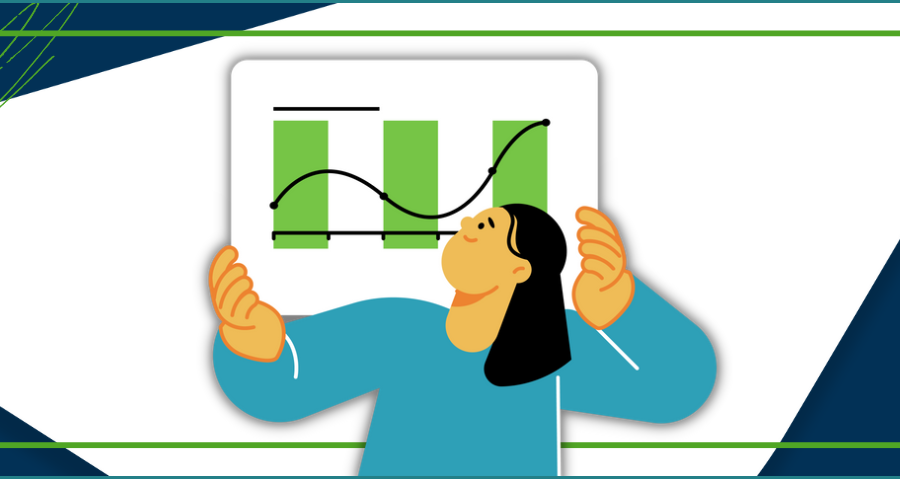What is Customer Profitability Analysis?
Customer profitability analysis is a method widely used by companies hoping to gain a better understanding of how much revenue each customer, or group of customers, generates. It enables a business to understand the true value of its customers, through careful evaluation of their profitability.
Exploring customer profitability analysis can provide numerous benefits to businesses. Not only does it allow companies to market themselves more effectively, but it can also help to improve long-term retention rates by facilitating highly targeted and more cost-effective strategies. Here’s how it works.
Customer Profitability 101
The profitability of a customer can be evaluated relatively easily – providing a company has all the relevant data to hand. Without it, organizations may find themselves left in the dark.
Calculating customer profitability relies on knowing the following:
- Total annual revenue generated by the customer
- Timeframe the customer will spend purchasing products or services
The annual profit of a customer can then be found simply by subtracting the cost of serving a customer over the course of a year from the revenue that they have brought to the company in that time. This analysis can be done in spread sheets or more easily with a purpose built profit analyzer solution.
Revenue might include the recurring revenue of a customer through repeat purchases, increased profits through upgrades or premier subscription services, and boosts in profitability due to cross-buying across different product ranges. When looking at expenses, you’ll need to think about auxiliary costs too such as loyalty scheme costs and operational expenses.
Ready for a recession?
Get tips from the experts for preparing your business for any economic state.
Customer Profitability Analysis: Essential for Revenue Growth
When companies take the time to understand customer profitability on an individual basis, it puts them in a stronger position to make better-judged decisions relating to margin growth.
Customer retention schemes can be managed more effectively using customer profitability analysis. The information obtained via this analysis enables companies to focus their retention efforts and thereby improve their success rate and the return on investment of these strategies.
With data obtained via customer profitability analysis, companies can segment customers into distinct groups, and make better use of personalization when marketing to these groups. Marketers will therefore be able to maximize the potential return of every interaction, while also showing different customer groups how valued they are by the brand.
Read: Why is Profitability Analysis so Important?
Read It Now
Running a Customer Profitability Analysis
To, run a customer profitability analysis, a company will need to examine a series of important profitability metrics. Typically, this data will be readily available.
Segment customers
Teams running a profitability analysis will need to calculate customer costs, including the expenses we mentioned earlier, and they’ll also need to know how these differ across customer groups. To understand this, customer data should be segmented into distinct groups. Profitability analysis can then be completed using the information held on these customer groups.
Gather the data
Once customer profitability calculations have been completed, teams will have much better visibility on the real value of different customer segments, taking into account the costs involved in retaining certain customers, and the profitability that they bring to the business as a whole. Calculations are only as reliable as the data that informs them, so it’s also a good idea to examine the technology used to record this data, and the availability of historic transaction data, before completing customer profitability analysis.
Put it all together
Customer profitability data can be presented using profitability curves. This method sees customer data sorted by net profit, then displayed as a curve from most profitable to least. By displaying data in this way, teams can easily see which groups of customers are most profitable – and therefore most worthy of their retention efforts.
What To Do With The Results
The results of customer profitability analysis are sometimes surprising, but it’s best to exercise some caution before acting on your findings.
Customer Profitability Dashboards
A customer profitability dashboard is a powerful tool designed to provide a comprehensive view of how profitable each customer is to a business. It aggregates data from various sources, such as sales, finance, procurement, and supply chain, to offer a holistic perspective on customer profitability.
Salespeople and managers typically use these dashboards on a monthly or quarterly basis to prepare for customer visits and strategic planning sessions. The primary purpose is to measure the profitability of a business by examining different areas of customer operations, enabling tactical execution and strategic decision-making.
Benefits of a Customer Profitability Dashboard
Businesses can leverage customer profitability dashboards in several ways to enhance their success:
- Data harmonization and integration: Setting up a customer profitability dashboard harmonizes and integrates data from various departments, including finance, sales, procurement, and production. This ensures that data used is accurate and agreed upon by all stakeholders.
- Comprehensive metrics: Dashboards provide insights into factors impacting revenue and costs by leveraging key information such as customer profitability, sales organization profitability, and product line profitability. These insights are often represented as causality charts, margin bridge analyzers, and revenue bridge analyzers for ease of access.
- Drillable analytics: A good customer profitability dashboard is drillable, allowing users to delve into lower-level displays and specific details. This capability is essential for understanding the nuances of customer profitability and making data-driven decisions.
- Consistent reporting: The dashboard should be used consistently across the organization to ensure that data streams remain unchanged and reliable. This consistency helps in maintaining the credibility of the data and the decisions based on it.
- Time efficiency: Dashboards save time by consolidating data from multiple sources into a single, easy-to-use interface. This eliminates the need for manual data collection and report generation, allowing businesses to focus on analysis and decision-making.
- Improved collaboration: By making dashboards accessible to different teams within the organization, businesses can promote collaboration and ensure that everyone is working towards common goals. Team members can see how their efforts contribute to the overall profitability of the business, helping keep them motivated and accountable.
- Strategic decision-making: By providing a comprehensive view of customer profitability, the dashboard empowers leadership teams to make strategic decisions that align with business objectives. It helps in identifying profitable customers, optimizing pricing strategies, and improving overall profitability.
Leveraging Customer Profitability Dashboards for Success
Businesses can leverage customer profitability dashboards to gain insights and drive success. Vendavo’s Profit Analyzer offers a comprehensive customer profitability dashboard with granular reporting. The Margin Bridge Analyzer analyzes customer profitability and revenue bridges, providing insights into pricing changes, new customers, and product introductions.CFOs appreciate the Margin Bridge Analyzer’s causality charts, offering a high-level view of profitability drivers. These tools enable businesses to analyze historical data, identify trends, and make informed decisions on pricing strategies, customer acquisition, and resource allocation.



